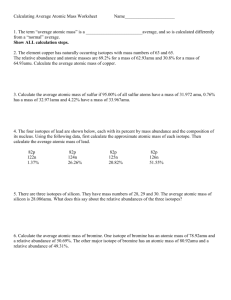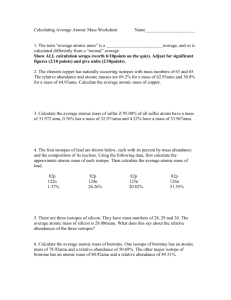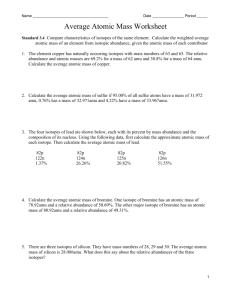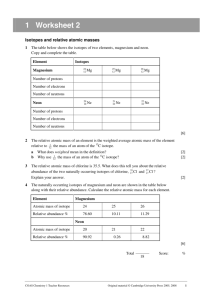Average Atomic Mass
advertisement
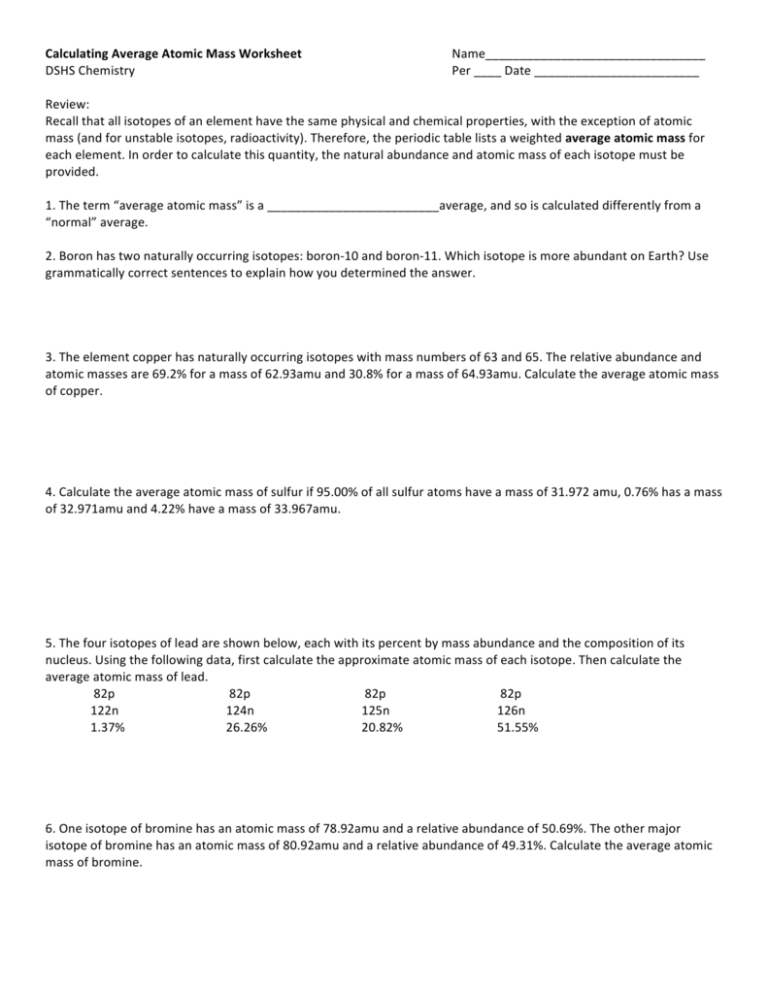
Calculating Average Atomic Mass Worksheet Name________________________________ DSHS Chemistry Per ____ Date ________________________ Review: Recall that all isotopes of an element have the same physical and chemical properties, with the exception of atomic mass (and for unstable isotopes, radioactivity). Therefore, the periodic table lists a weighted average atomic mass for each element. In order to calculate this quantity, the natural abundance and atomic mass of each isotope must be provided. 1. The term “average atomic mass” is a _________________________average, and so is calculated differently from a “normal” average. 2. Boron has two naturally occurring isotopes: boron-­‐10 and boron-­‐11. Which isotope is more abundant on Earth? Use grammatically correct sentences to explain how you determined the answer. 3. The element copper has naturally occurring isotopes with mass numbers of 63 and 65. The relative abundance and atomic masses are 69.2% for a mass of 62.93amu and 30.8% for a mass of 64.93amu. Calculate the average atomic mass of copper. 4. Calculate the average atomic mass of sulfur if 95.00% of all sulfur atoms have a mass of 31.972 amu, 0.76% has a mass of 32.971amu and 4.22% have a mass of 33.967amu. 5. The four isotopes of lead are shown below, each with its percent by mass abundance and the composition of its nucleus. Using the following data, first calculate the approximate atomic mass of each isotope. Then calculate the average atomic mass of lead. 82p 82p 82p 82p 122n 124n 125n 126n 1.37% 26.26% 20.82% 51.55% 6. One isotope of bromine has an atomic mass of 78.92amu and a relative abundance of 50.69%. The other major isotope of bromine has an atomic mass of 80.92amu and a relative abundance of 49.31%. Calculate the average atomic mass of bromine.

